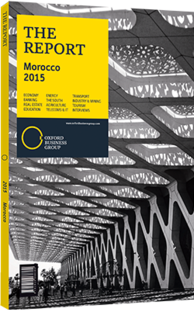Morocco tomato exports to EU on the rise
Tomatoes constitute one of Morocco’s main fresh exported agricultural produce and a key revenue earner. Between 2007-08 and 2012-13, Morocco exported an average of 414,277 tonnes of tomatoes annually, accounting for 33% of production. Europe remains the kingdom’s primary trading partner in this segment, absorbing about 350,000 tonnes of the crop annually.
Production
Tomatoes, for the most part, are produced in the regions of Souss-Massa-Draa and Doukkala-Abda. Between 2007/08 and 2012/13, production averaged 1.27m tonnes a year. Conditions conducive for tomato production in Morocco include an affordable workforce and favourable weather conditions. However, recent growth has been accelerated by a number of incentives and segment-specific programmes initiated under the Green Morocco Plan (Plan Maroc Vert, PMV), notably the contract programme targeting the development of farm crops (fruit and vegetables).
The programme is expected to mobilise up to Dh21bn (€2.3bn) in investment by 2020, and aims at expanding greenhouse cultivation areas to 12,400 ha and field plantations to 9000 ha. The programme also targets supplying up to 28,000 ha with localised irrigation systems. As a result, tomato output saw its average yield per ha increase from 60.6 tonnes in 2008/09 to 83.3 tonnes in 2012/13. Furthermore, incentives to spur investment in the fruit and vegetable segments were devised by the Agricultural Development Fund to aid with the acquisition of greenhouses, agricultural equipment and better water management. “Generally speaking, access to water for irrigation remains an obstacle, notably in the province of Chtouka Aït Baha,” Soufiane Larguet, director of strategy and statistics at the Ministry of Agriculture and Fisheries, told OBG. “A project to set up a desalination plant in the area is in the planning stages. Once operational, it will ensure sustainability of the surface area allocated to horticulture.”
Estimated at a total cost of Dh2.8bn (€304.6m), the project received Dh1.5bn (€163.2m) in financing from the Arab Fund for Economic and Social Development in June 2014. This approach is in line with the government strategy to form public-private partnerships to develop its irrigation networks (see overview).
Exports
The share of exported Moroccan tomatoes on the global market expanded from 2.7% in 2002 to 6.8% in 2012, due in large part to increased demand. Indeed, global tomato imports grew by an average of 5.3% annually between 1990 and 2010 driven by higher demand on behalf of the Russian (11.4%) and US (7.5%) markets, according to figures from the UN Food and Agriculture Organisation. However, Europe remains Morocco’s primary destination, with up to 90% of exports absorbed by the EU. Fierce competition among major producers, such as Spain and Turkey, is one reason limiting Morocco’s ability to expand and capture new market shares. Non-tariff barriers, such as the strict sanitary controls placed on imports of perishable goods to the US, also constitute another limiting factor. Morocco, however, is striving under its PMV to carry on with its plans to bolster its tomato production and increase its share in existing and potential markets.
Tomato Compromise
Morocco was granted preferential export quotas in 2012 following the EU’s decision to extend the free trade agreement. This latest arrangement with the bloc granted Morocco the right to export up to 55% of staple produce without paying Customs duties, as opposed to 33% previously. In April 2014 a new entry price system for imported fruit and vegetable to the EU sparked concern among Moroccan exporters and policymakers who deemed it inconsistent with the multiple cooperation agreements signed between the kingdom and the bloc (see analysis).
The issue was settled after a compromise was reached with the EU in June 2014 to adjust entry prices for certain crops, including tomatoes. The new deal distinguishes between and recognises the different varieties of tomatoes that have emerged in recent years, and stipulated that these varieties also benefit from Custom duty exemptions within the fixed quota, thereby increasing the average price Morocco earns for its tomatoes.
You have reached the limit of premium articles you can view for free.
Choose from the options below to purchase print or digital editions of our Reports. You can also purchase a website subscription giving you unlimited access to all of our Reports online for 12 months.
If you have already purchased this Report or have a website subscription, please login to continue.

